Overview: The Barth/Magnatone Guitars
If you go to our site map, you’ll find a category called “Rickenbacker-adjacent guitars”. We’ve discussed Rickenbacker produced oddities like the Astro guitar kit, exact copies like the Nelson Coquette, and licensed designs like the Chandler 555. But how do we categorize the Barth/Magnatone guitars?
I mean, Paul Barth goes way back with Rickenbacker—and I mean ALL the way back. He was there helping John Dopyera invent the resonator guitar in response to George Beauchamp’s request for “more loud”. He was there helping Beauchamp develop the horseshoe pickup—the first commercial guitar pickup—because Beauchamp wanted still even more loud. And he was there with Beauchamp and Adolph Rickenbacher at the founding of the Ro-Pat-In company, the forefather of today’s Rickenbacker, as a (minor) shareholder.
And after the company was sold to F.C. Hall, Barth stuck around a while as the factory manager. During this period he helped tweak the Combo 600 and 800 designs (which came from an outside design firm)—including those guitars’ headstock design—although there is debate over exactly what Barth and Roger Rossmeisl’s respective roles were in the finalizing of that design. Oh, and he also likely invented the humbucking pickup.
Wait, what? I thought Seth Lover invented the humbucker at Gibson? Not so fast! While Barth’s name may not be on the first patent application—largely because Rickenbacker didn’t bother filing a patent!—let’s do the math. Remember that Barth was instrumental in helping Beauchamp develop the horseshoe. The Combo 800, launched in 1954, introduced the “Rickenbacker Multiple-Unit” pickup—a horseshoe pickup with a second, hum-canceling coil. Barth was the factory manager at the time, instrumental in the design of the Combo 600 and 800, and given his background almost certainly designed the Rickenbacker Multiple-Unit. And 1954 is before both Gretsch and Gibson launched their humbucker pickups. See what I’m getting at? Justice for Paul Barth!
Barth left Rickenbacker in May 1957. Why? Well, I can’t find a definitive answer but the gist seems to be this: Barth was a holdover from before Hall’s ownership. Hall brought Roger Rossmeisl in to do design work. Along the way, Rossmeisl became Hall’s “go-to guy”—which is kinda ironic since Barth had recommended Rossmeisl to Hall! But in the end, Barth and Rossmeisl ended up not always seeing eye to eye on things. Barth likely saw the writing on the wall and decided it was time to move on.
By this point in time Barth had been in the electric guitar biz since…well, the beginning of the electric guitar biz! So it shouldn’t come as much of a shock to learn that it didn’t take him long to throw his own hat into the ring. And his entry came with an oddly familiar silhouette.
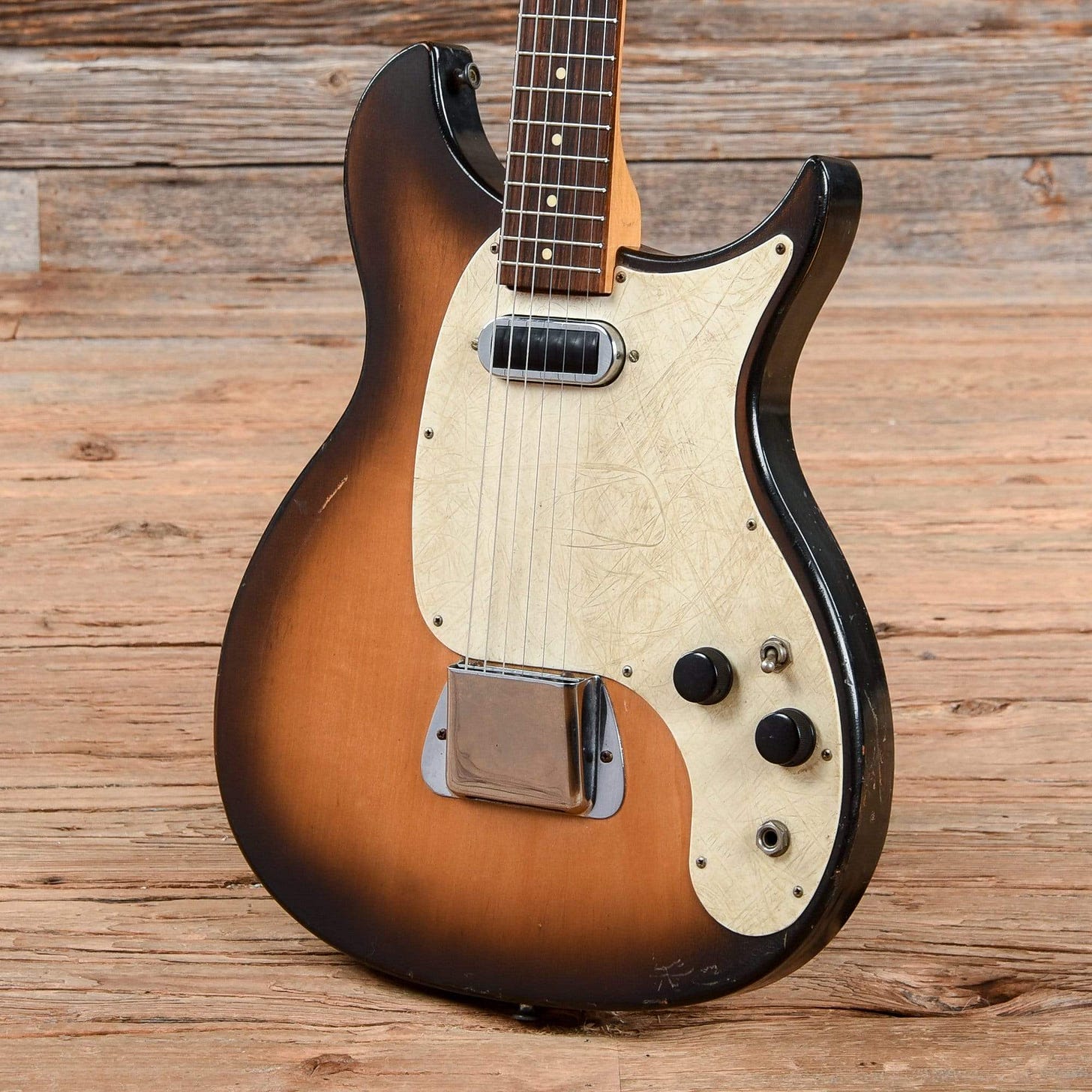
The guitar above was part of a three-model family produced between 1959 and 1960 by Barth. You will find examples from this period with three different names on the headstock. One is just “Barth”:
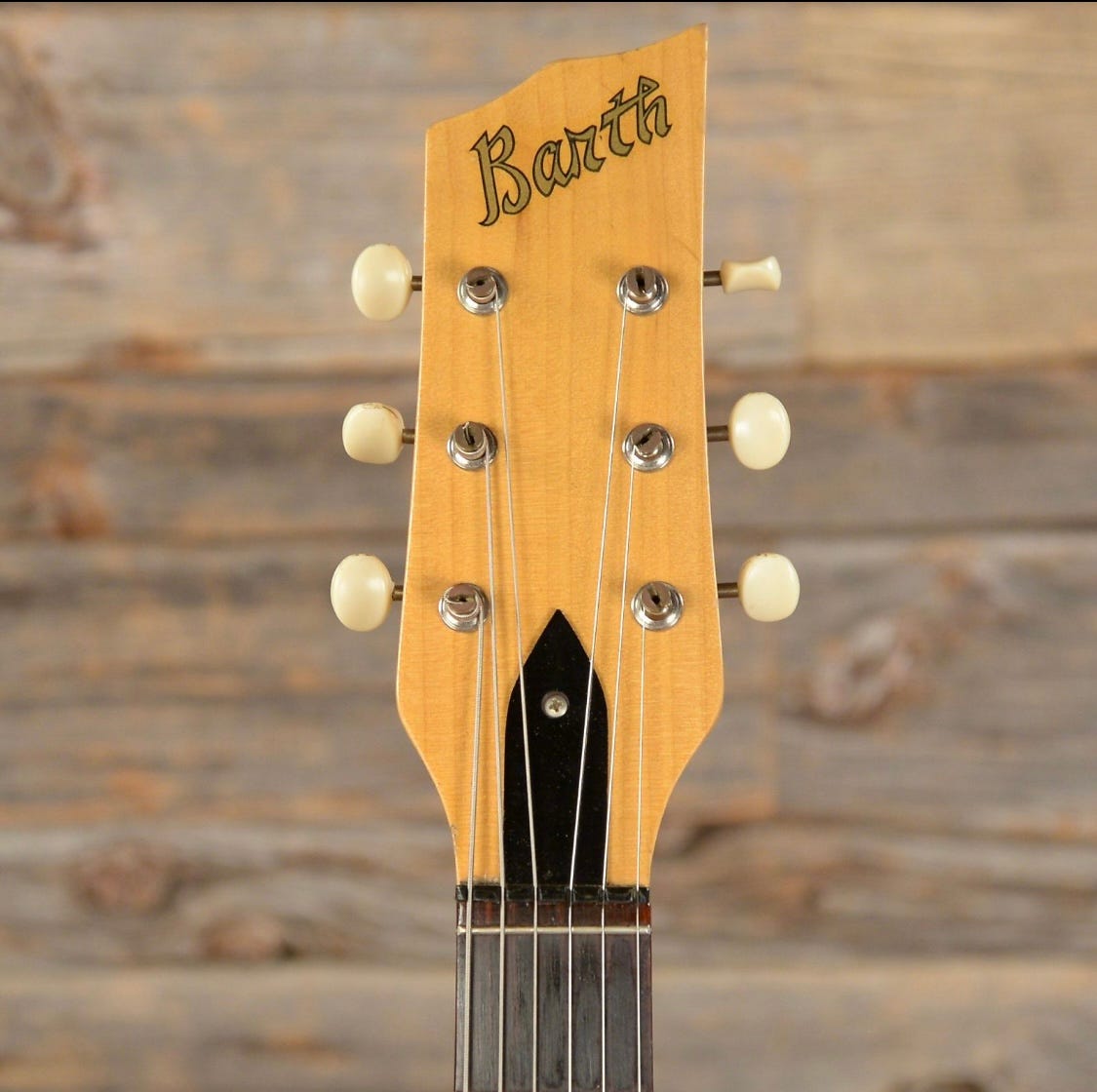
One is “Barth” plus “Natural Music Guild:
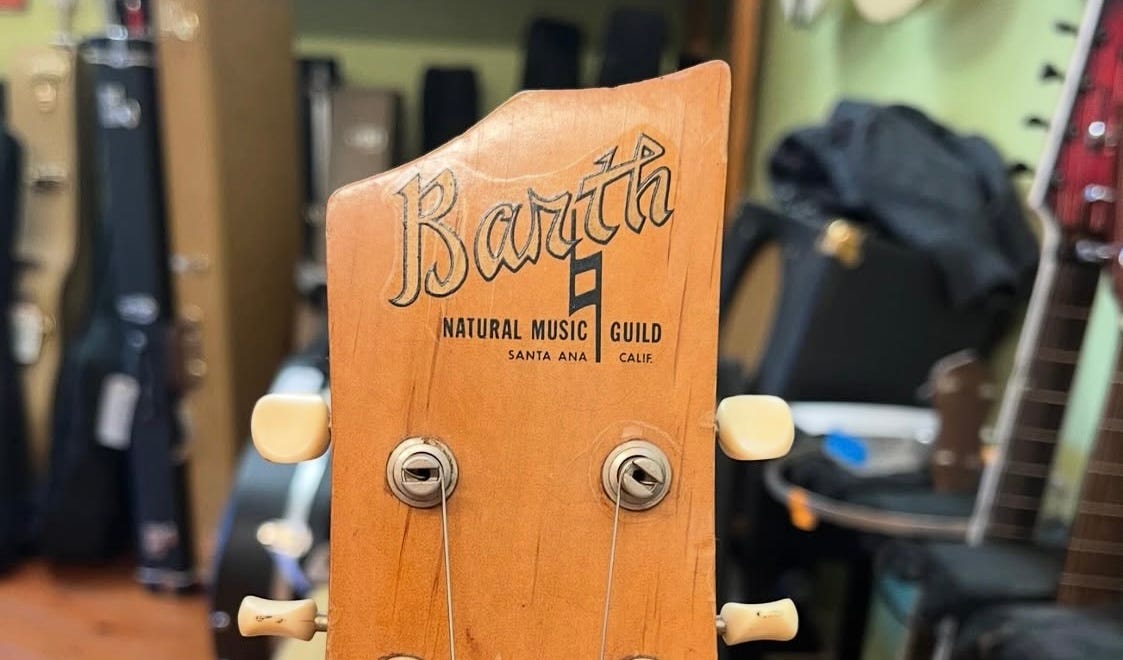
And the final one is “Magnatone”:
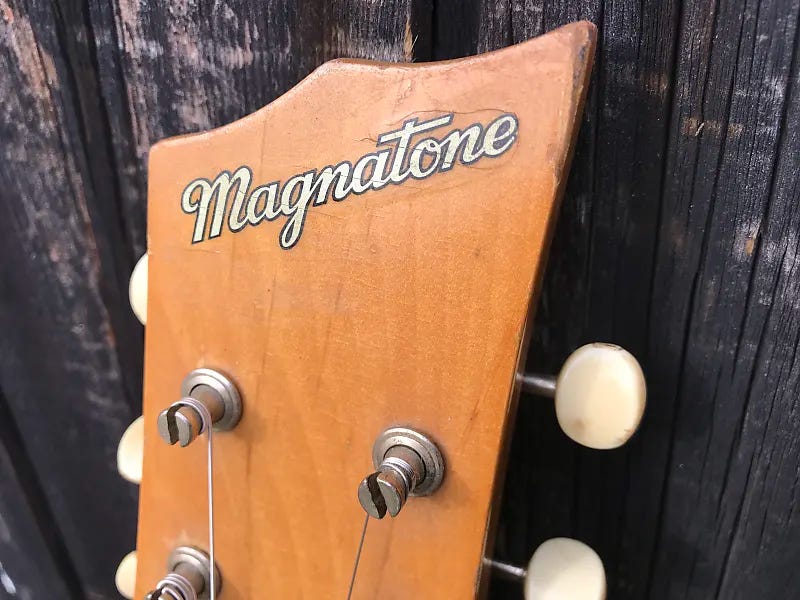
So let's take just a quick minute to talk about Magnatone. While their amps of the period are revered today—especially for their “true stereo vibrato” which actually pitch shifted instead of simply modulating the volume like other period amplifiers did—they basically outsourced their (limited) guitar offerings to whoever was willing. Their first “electric Spanish” offerings—the Mark III, IV, V, and VI—were designed and built by Paul Bigsby from 1955-1958.

Bigsby broke with Magnatone in 1958 and suggested they contact Paul Barth to replace him. And so in 1959 we got the Barth-designed and built Mark VII, VIII, and IX.
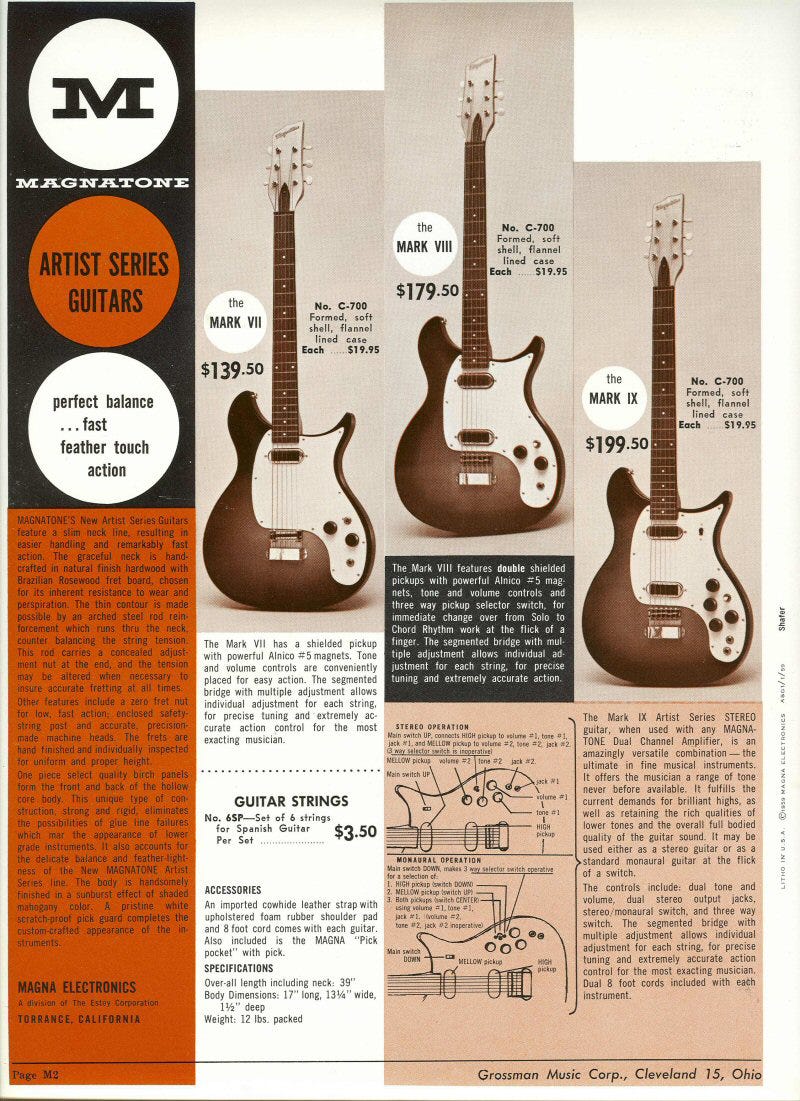
The Mark VII, like the one we already saw up above, was the one pickup version. The Mark VIII had two pups. And the Mark IX was a Mark VIII with stereo output.
So let’s talk about the guitars themselves, because apart from the outline there are a few other Rickenbacker similarities. Let’s start with the construction.
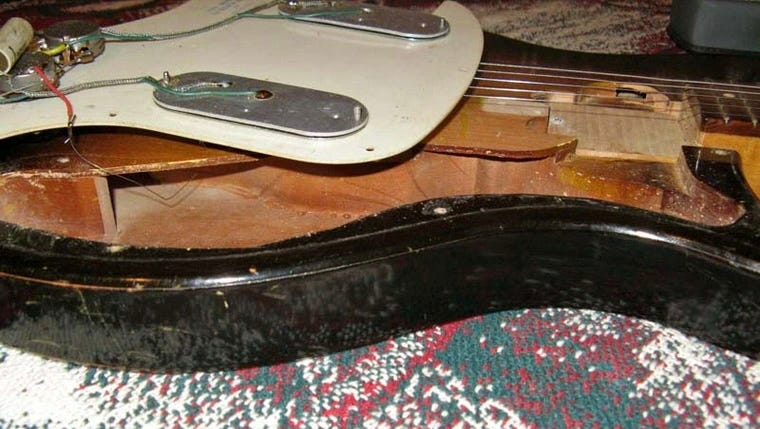
The bodies are kinda semihollow, with a heavily routed birch core sandwiched between separate birch tops and bottoms. The one piece maple neck is bolted on, and features a thick rosewood slab fingerboard. All guitars were finished with a two-tone sunburst.
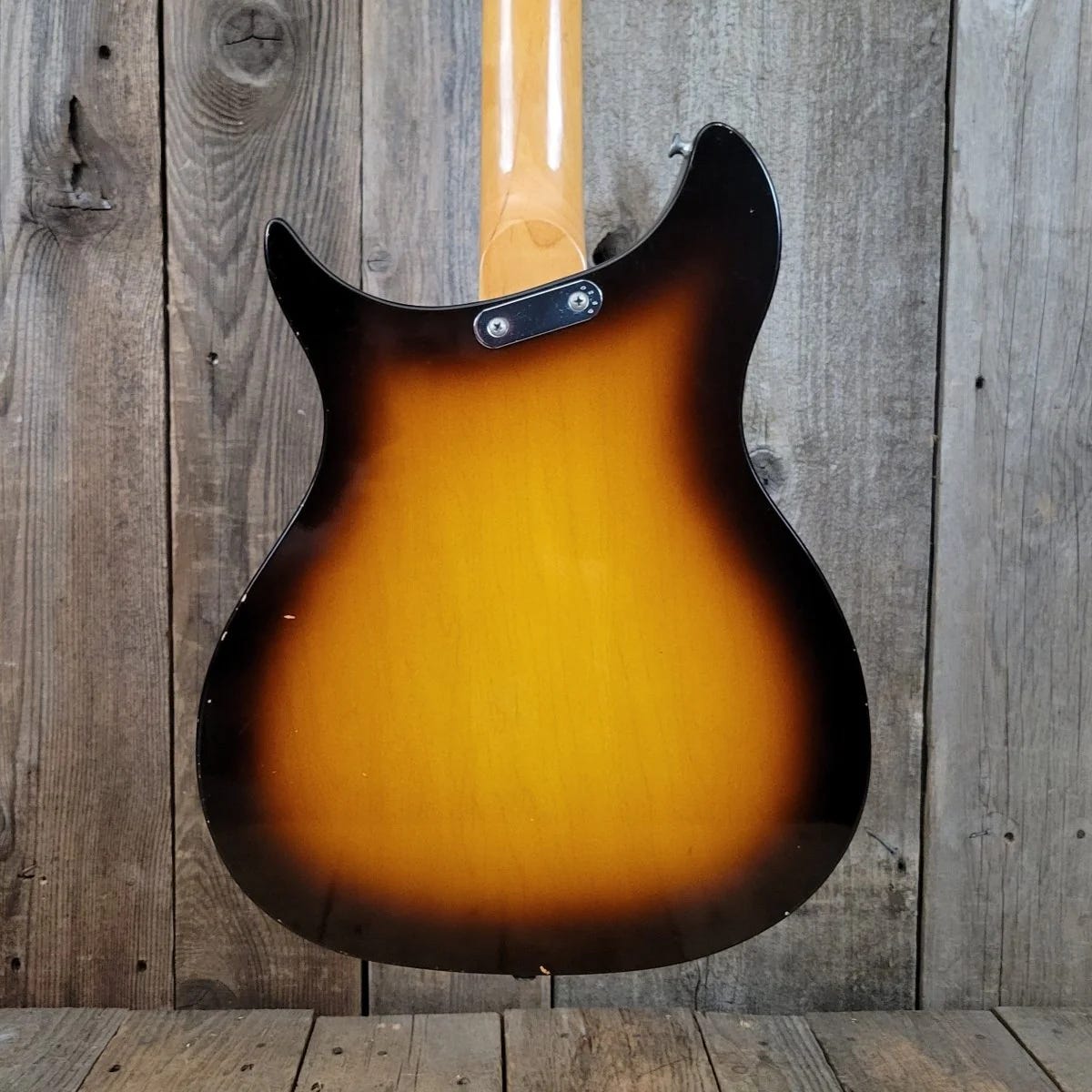
The pickups are a bit of a mystery. Mounted on a fiberglass pickguard, most sources claim they are an evolution of the Paul Bigsby-designed units that appeared on the Mark III-VI guitars—and they certainly have visual similarities. But a handful of sources claim they’re Barth’s own design.

I tend to think the latter is true—or that at the very least they’re not the Bigsby design. There are enough differences between the two that make me believe that—but I can’t prove it one way or another.
The bridge/bridgeplate is clearly Rickenbacker-inspired. Early examples had a cover over the sharp-edged bridgeplate not dissimilar to Rickenbacker’s bridge cover. Later examples had “Jazz Bass” style covers over the entire baseplate/bridge assembly.
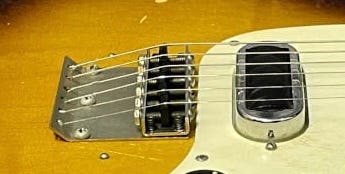
And then there’s the stereo wiring on the Mark IX. Believe it or not it actually predates Rickenbacker’s Rick-O-Sound stereo output, which would not debut until 1960–a year after the Mark IX appeared. The stereo output was probably a tie-in with the 280 amplifier which launched in 1957 with “true stereo vibrato”. Unlike Rickenbacker’s design, both output jacks had to be used to take advantage of the stereo effect, with each jack carrying a separate pickup’s signal.
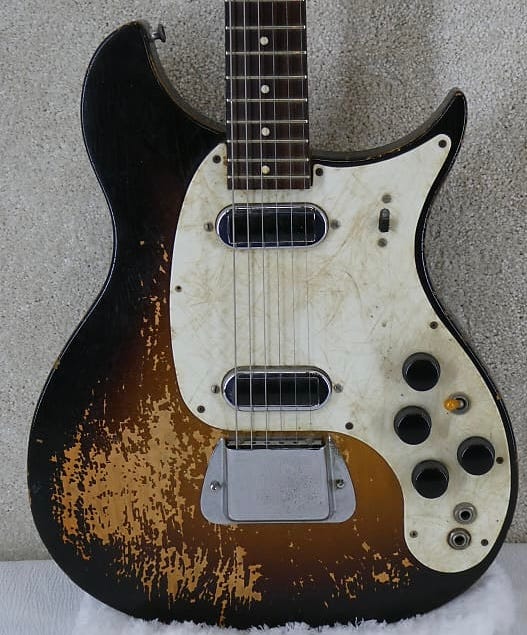
We’ve avoided talking about the shape…so let’s do that now. Yeah. It looks a lot like the small body Capris. Like, a lot a lot. So let’s walk through the timeline. Barth left Rickenbacker in May, 1957. Rossmeisl built the prototype Combo 850–the first guitar to use that silhouette —in June of 1957. So while Barth MAY have had a hand in the original design, it is still a product of the “post-Barth” era at Rickenbacker—if only just barely.

So yeah. He kinda “borrowed” it. I’m gonna say two things kinda in his defense here. One, he MAY have had a hand in it. May. Two, at the point Barth was developing his guitar—late 1958/early 1959–this shape was not part of the design lexicon like it is today. The 850 and the following smallbody Capris? Flops. Famously only around thirty short scale Capris built in 1958. If “that guy” hadn’t bought one in Hamburg in 1960 that had sat unsold for TWO YEARS, it would likely be forgotten today. But still, yeah. It’s pretty much a copy. Not exact…but close enough.
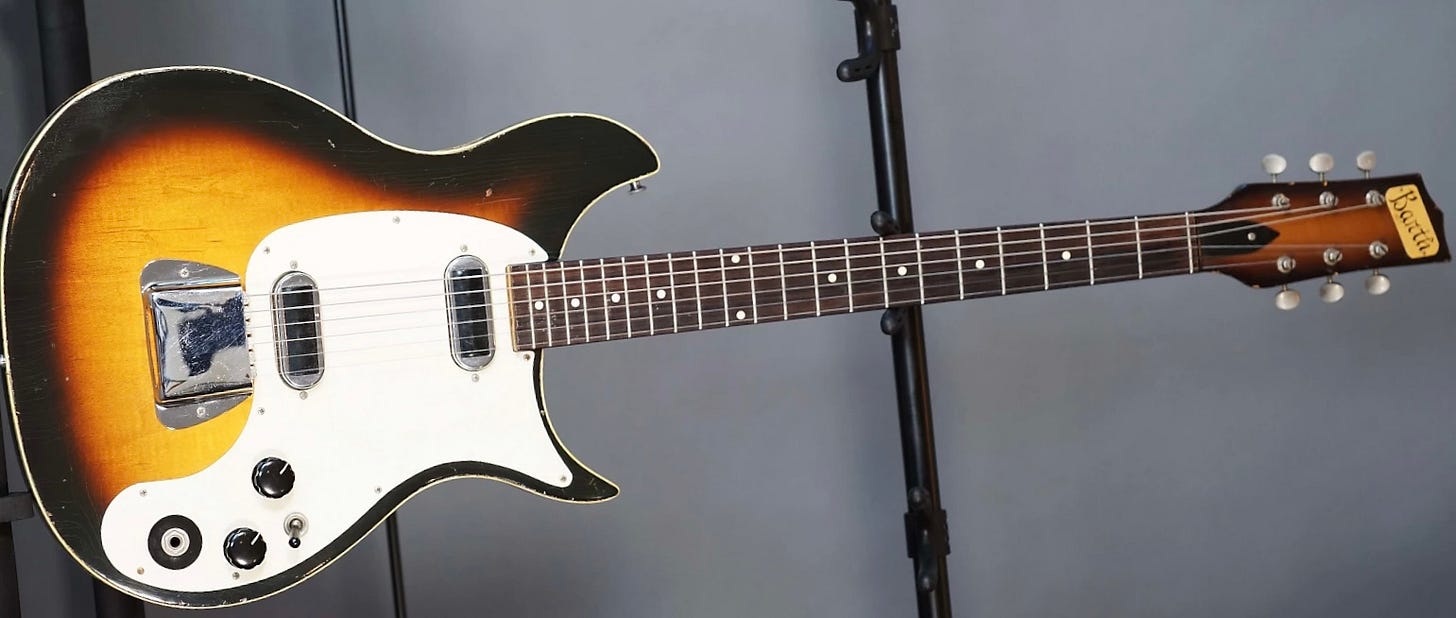
The two pickup Mark VIII had an MSRP of $179.50 at a time when the two pickup Rickenbacker 450 had an MSRP of $214.50. That’s about a $400 difference in 2025 dollars. $750 less than a 330 Capri. That should give you an idea of the difference between a Rickenbacker and a Barth. Are the features/fit/finish of the guitar appropriate for the price point? Sure! Are they the same as a Rickenbacker? No. They are not.
So what’s the story with the three different brand names on the headstock? Well, the answer is pretty simple: the guitar was ready to go before Magnatone entered the picture. So “Barth” came first. So then where did “Natural Music Guild” come from?
Well, starting in the late 1940s, when “Hawaiian” guitar was still all the rage, there was a popular series of sheet music teaching the “natural method” of instruction published by….the Natural Music Guild of Santa Ana, California.
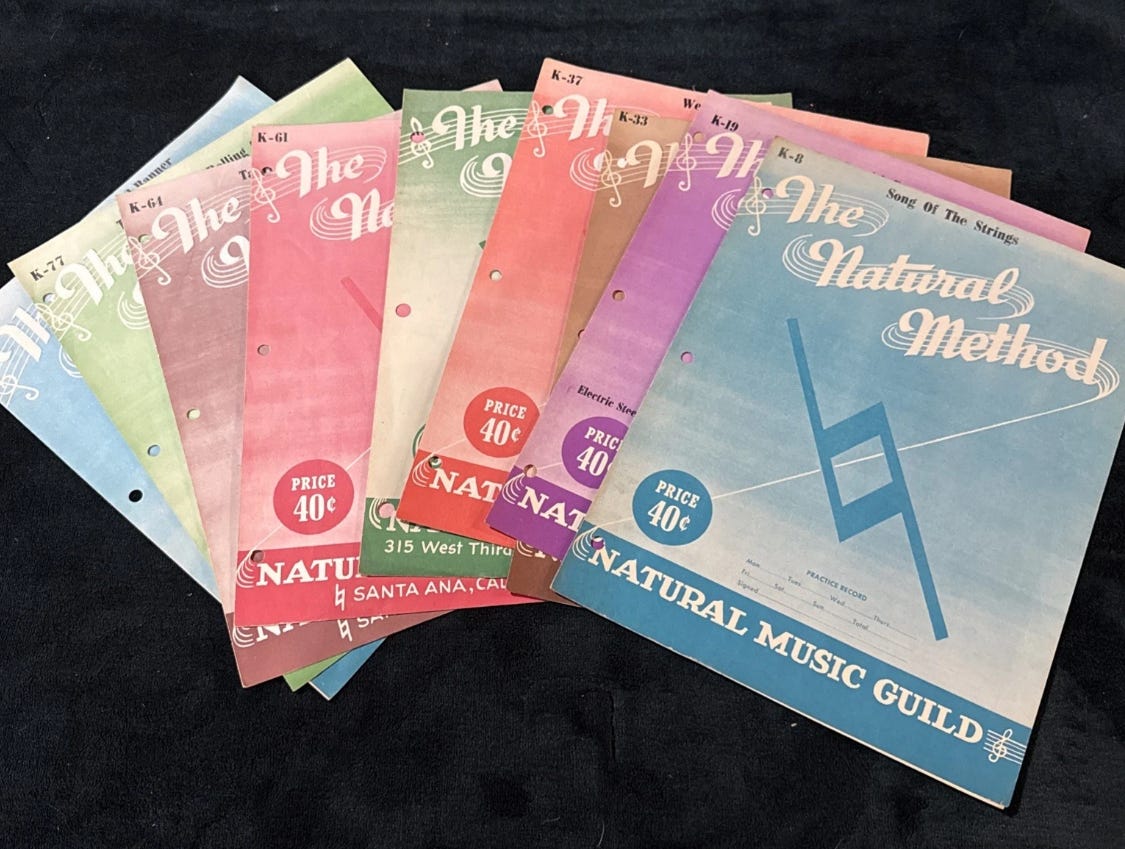
At some point, they added musical instruments to their portfolio, like so many “music schools” of the era did. Enter one Paul Barth, guitar manufacturer of Santa Ana, California who needed distribution. Until a bigger name came along, that is. Et voila! “Barth”…“Barth/Natural Music Guild”…“Magnatone”.
Funnily enough, at some point down the road—after his time with Magnatone—Barth basically co-opted Natural Music Guild, which seems to have served as a distributor for companies and products associated with…Paul Barth and his pals. How that happened I do not know…but I went way down the Barth rabbit hole on this one and am determined to figure it out at some point.
The Mark VII-IX ran through 1960. Barth went on to design a few more guitars for Magnatone—none as Rickenbacker-ish—but ended up leaving around 1964-65. In 1964 he founded Bartell guitars with Ted Peckels, and Bartell makes a legitimate claim for producing the first fretless electric bass in 1967–along with a number of other interesting and innovative guitars
And that’s the story of the Barth/Magnatone guitars. I gotta tell you, it started off very murky but was made much easier after I was granted access to a treasure trove of information by Paul Brett, the author of Finding Fretless—the story of tracking down the fretless Bartell guitar owned by George Harrison—and probably THE expert on Paul Barth and his many contributions to the modern electric guitar. Paul is working with NAMM to get Barth the recognition he deserves—a worthy cause! Many thanks to Paul!
Want to learn more about…everything else? Check out our handy site map to see what we’ve already covered. Got something you’d like to see covered? Drop it in the comments and we’ll add it to the queue.


Are there any brochures/photos/information about the Barth electric bass out there?
Well don, Andy! I've always been interested in the Barth guitars that seem to come up for sale now and again.